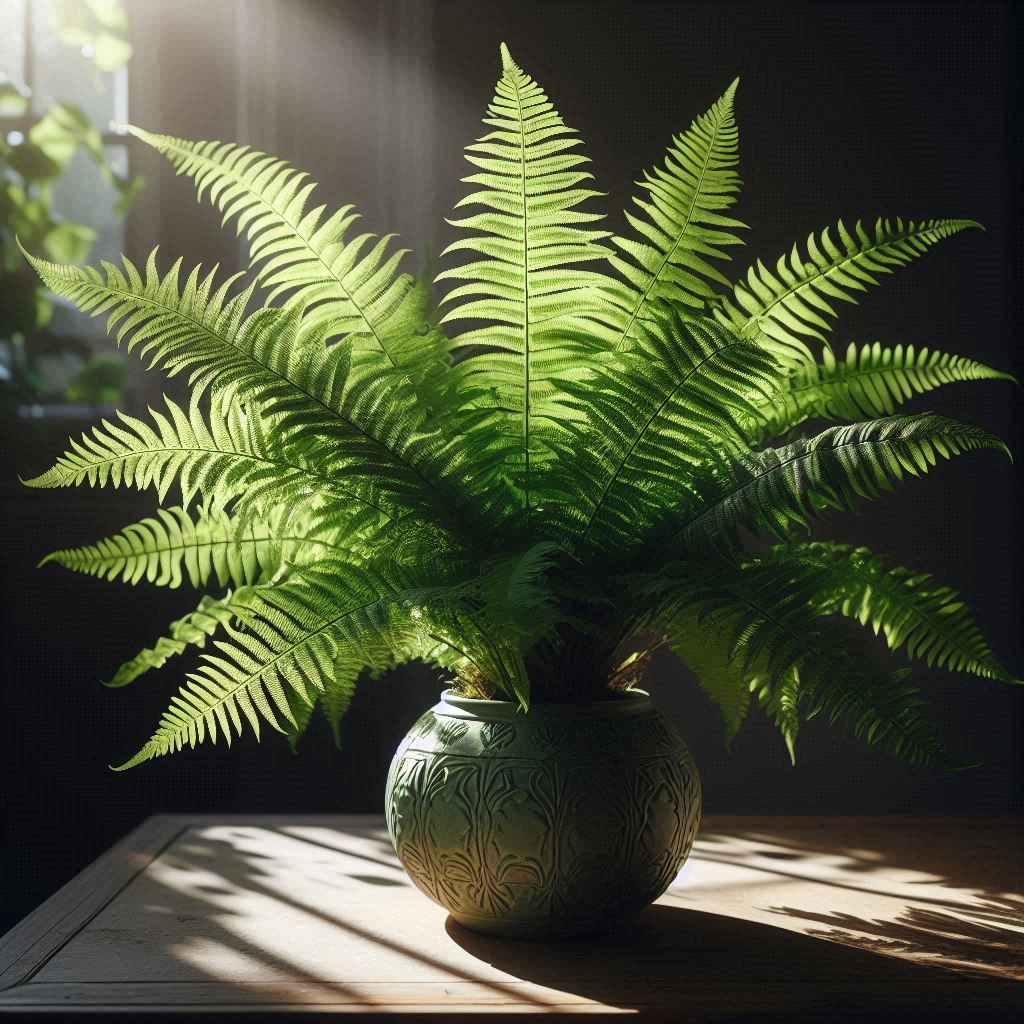
Indoor plants
Boston Fern (Nephrolepis exaltata) – The Ultimate Guide to Growing and Caring for This Lush Indoor Plant


DINKAR
10/22/2024
Introduction
Indoor plants have become a popular addition to homes and offices, enhancing aesthetics and improving air quality. Among the lush foliage plants, the Boston Fern (Nephrolepis exaltata) is a standout, known for its feathery, arching fronds that bring a touch of greenery to any space. This beautiful fern is not only visually appealing but also relatively easy to care for, making it an ideal choice for both novice and experienced plant enthusiasts.
In this comprehensive guide, we’ll explore everything you need to know about the Boston Fern, including its characteristics, care requirements, propagation methods, and the benefits of having it indoors. Get ready to discover why the Boston Fern deserves a place in your home!
1. What is the Boston Fern?
The Boston Fern, scientifically known as Nephrolepis exaltata, is a perennial fern native to tropical regions around the world, particularly in Central and South America. Characterized by its long, arching fronds and delicate leaflets, the Boston Fern is often considered one of the most popular indoor ferns.
The plant can grow up to 3 feet (90 cm) tall and 4 feet (120 cm) wide, making it a stunning statement piece in any room. Boston Ferns are known for their ability to thrive in humid environments, making them ideal for bathrooms, kitchens, or any area with higher moisture levels.
2. Characteristics of Boston Fern
Boston Ferns have several defining features that make them unique:
- Fronds: The plant is characterized by its feathery, cascading fronds that can grow up to 2 feet (60 cm) long. The leaflets, or pinnae, are small and densely packed, giving the fronds a soft, lush appearance.
- Color: The leaves of the Boston Fern are typically bright green, adding vibrancy to your indoor space. They can sometimes exhibit a slightly glossy finish.
- Growth Habit: Boston Ferns can be grown as hanging plants, in pots on tables or shelves, or even in terrariums. Their graceful, trailing growth habit makes them a versatile choice for various displays.
3. How to Care for Boston Ferns
Boston Ferns are relatively easy to care for, but they do have specific requirements to thrive. Here’s a detailed guide to keeping your Boston Fern healthy and happy:
A. Light Requirements
Boston Ferns prefer bright, indirect light. While they can tolerate lower light conditions, insufficient light can lead to sparse growth and leaf drop. Avoid direct sunlight, as it can scorch the delicate fronds. A north or east-facing window is ideal, but you can also place them in well-lit rooms with filtered light.
B. Watering
Boston Ferns thrive in consistently moist soil. Water your fern when the top inch of soil feels dry. Be cautious not to overwater, as soggy soil can lead to root rot. It’s best to use room temperature water to prevent shocking the plant. If the air is particularly dry, consider misting the leaves regularly to maintain humidity.
C. Humidity and Temperature
Boston Ferns love humidity! They prefer environments with humidity levels of 50% or higher. If your home is dry, especially in winter, consider using a humidifier or placing a tray of water near the plant to increase moisture. Misting the leaves frequently can also help.
As for temperature, Boston Ferns thrive in average indoor temperatures between 60°F and 75°F (15°C to 24°C). Keep them away from cold drafts, air conditioning vents, and heaters to prevent stress.
D. Soil and Potting
A well-draining, organic potting mix is essential for Boston Ferns. You can use a standard potting mix enriched with peat moss and perlite for better aeration. Boston Ferns appreciate being slightly root-bound, so choose a pot that isn’t too large. Repotting is usually needed every 1-2 years, especially if you notice the roots filling the pot.
E. Fertilization
During the growing season (spring and summer), feed your Boston Fern with a balanced, diluted liquid fertilizer every 4-6 weeks. Reduce or eliminate fertilization in the fall and winter when the plant’s growth slows down. Over-fertilizing can lead to salt buildup and damage the roots.
4. Propagating Boston Ferns
Boston Ferns can be propagated through division or spores. Here’s how to do both:
A. Division Method
- Select a Healthy Plant: Choose a mature Boston Fern with multiple fronds.
- Remove from Pot: Gently take the fern out of its pot, being careful not to damage the roots.
- Divide the Plant: Using clean, sharp scissors, divide the plant into smaller sections, ensuring each section has roots and fronds.
- Replant: Pot each section in its own container with fresh potting mix and water thoroughly.
B. Spore Method
Boston Ferns reproduce through spores, which can be collected and sown:
- Locate Spores: After your fern has matured, look for brown, spore-filled clusters on the undersides of the fronds.
- Harvest Spores: Gently scrape the spores into a paper envelope.
- Sow Spores: In a small container with moist sphagnum moss or sterile potting mix, sprinkle the spores evenly on the surface and lightly mist.
- Provide Conditions: Cover the container with plastic to create a humid environment and place it in a warm, bright area. Once seedlings emerge, transplant them into individual pots.
5. Common Problems and Solutions
While Boston Ferns are generally resilient, they can face a few challenges:
- Brown Tips on Fronds: This is often a sign of low humidity. Increase humidity levels by misting the leaves or using a humidifier.
- Yellowing Leaves: Overwatering or underwatering can lead to yellowing leaves. Check the soil moisture and adjust your watering routine accordingly.
- Leaf Drop: If your Boston Fern starts dropping leaves, it may be experiencing temperature stress, inadequate light, or low humidity. Assess its environment and make necessary adjustments.
- Pests: Keep an eye out for common pests like spider mites, aphids, and scale. You can treat infestations with insecticidal soap or neem oil.
6. Benefits of Having a Boston Fern Indoors
Boston Ferns not only enhance your home’s aesthetics but also offer numerous benefits:
- Air Purification: Boston Ferns are known for their ability to filter out pollutants like formaldehyde and xylene from the air, improving indoor air quality.
- Humidity Regulation: As a high-humidity plant, Boston Ferns can help maintain moisture levels in your home, making them ideal for dry environments.
- Stress Relief: Studies have shown that having plants indoors can reduce stress and enhance mood, providing a calming atmosphere in your home.
- Versatile Décor: With their lush, green fronds, Boston Ferns can be used in various decorative styles, from traditional to modern, and fit well in both homes and offices.
Conclusion
The Boston Fern (Nephrolepis exaltata) is a beautiful and rewarding indoor plant that can transform your living space. With its graceful fronds and lush greenery, it adds a touch of nature to any environment. By following the care tips and guidelines outlined in this guide, you can ensure your Boston Fern thrives and becomes a cherished part of your home.
Whether you’re a seasoned plant parent or a beginner, the Boston Fern is a fantastic choice for enhancing your indoor plant collection. Embrace the beauty and benefits of this lush fern, and enjoy the calming presence it brings to your space!